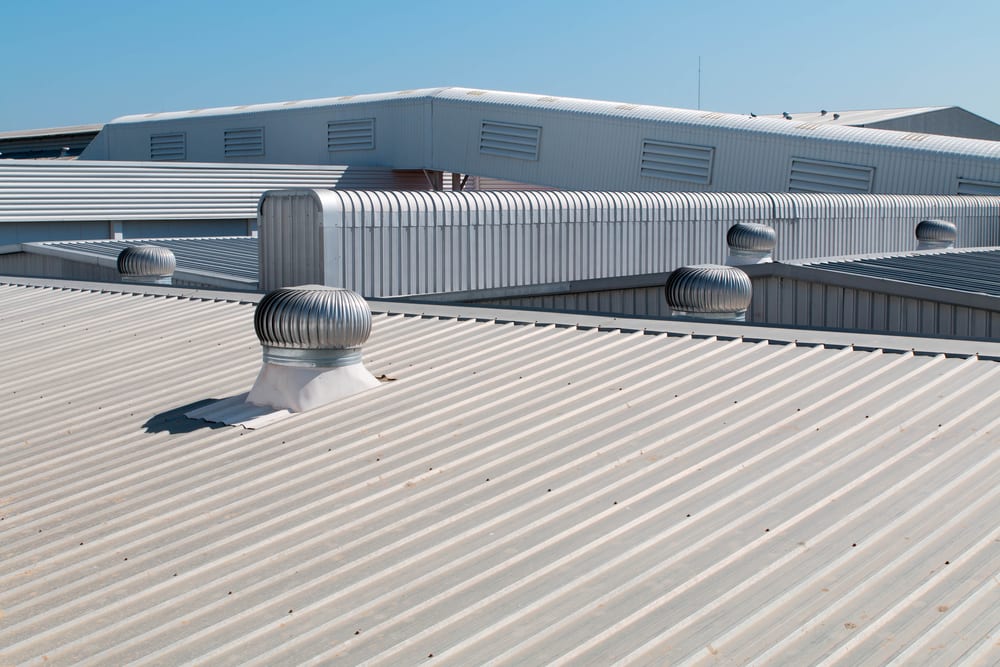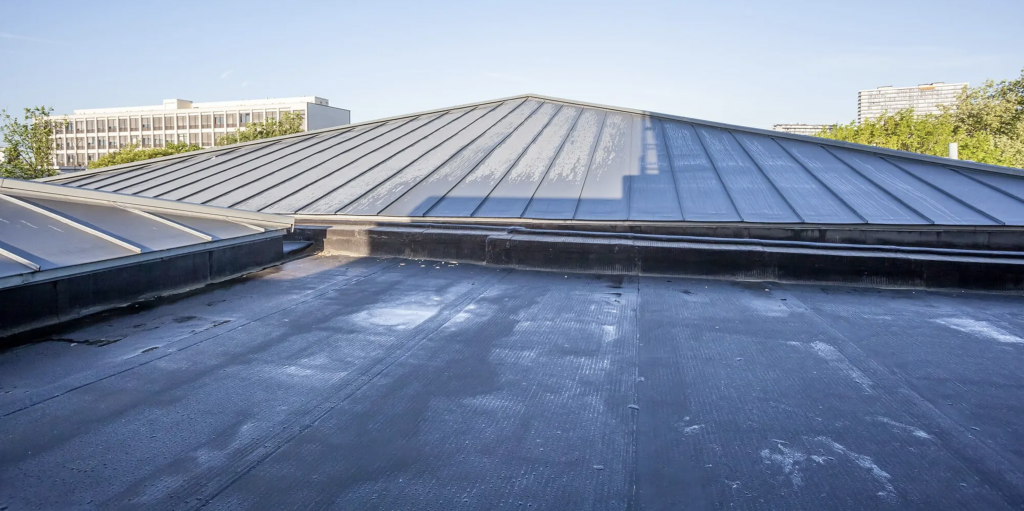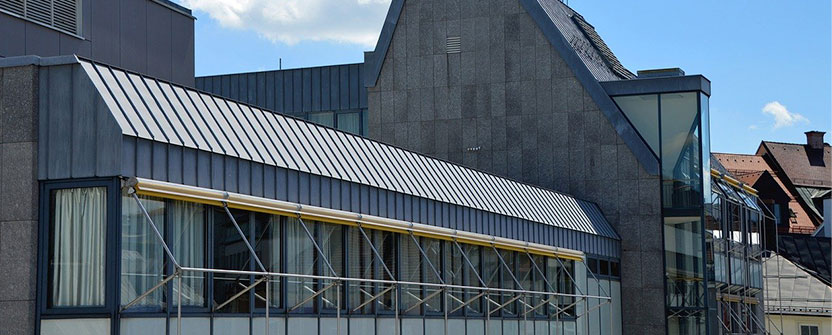Are you in the process of constructing a new commercial building and wondering what type of roof would be the most suitable? Look no further, as this article aims to explore the question of what is the best roof for a commercial building. Whether you are seeking durability, energy efficiency, or architectural appeal, understanding the different roofing options available can ultimately help you make an informed decision. So, let’s explore the various factors to consider and discover the perfect roof for your commercial establishment. When it comes to choosing the best roof for a commercial building, there are several factors that you need to consider. The climate, building structure, building purpose, budget, and durability are all important factors to take into account. In this article, we will explore these factors in detail and also discuss the different types of roofing options available.
Climate
The climate of the region where the commercial building is located plays a significant role in determining the best roof type. For instance, if the area experiences heavy rainfall or snowfall, a roof that is resistant to moisture and can handle the weight of snow would be ideal. On the other hand, if the region has high temperatures and intense sunlight, a roof that is reflective and can provide insulation would be more suitable to keep the building cool.
Building Structure
The structure of the building is another important consideration when choosing the best roof type. Factors such as the slope of the roof, the presence of any architectural features, and the load-bearing capacity of the structure need to be taken into account. Some roofing materials and styles may not be suitable for certain structures, so it is vital to assess the compatibility of the roof with the building structure.
Building Purpose
The purpose of the commercial building also influences the choice of the roof type. Different types of businesses have different requirements. For example, a warehouse may require a roof that can withstand heavy loads and provide adequate insulation. On the other hand, a retail store may need a roof that is aesthetically pleasing and can attract customers. Understanding the specific needs of the building’s purpose is crucial in determining the best roof type.
Budget
The budget allocated for the roof is an essential factor in the decision-making process. The cost of materials, installation, and maintenance vary for different roof types. It is important to find a balance between quality and cost-effectiveness. While it may be tempting to opt for the cheapest option, it is crucial to consider the long-term durability and maintenance costs of the roof as well.
Durability
Durability is a key consideration when choosing a roof for a commercial building. The roof should be able to withstand the elements, resist damage, and have a long lifespan. Investing in a durable roof can save you from costly repairs and replacements in the future.
Now that we have discussed the important factors to consider, let’s explore the various types of roofing options available for commercial buildings.

Built-Up Roofing (BUR)
Description
Built-Up Roofing (BUR) is a traditional type of roof that consists of multiple layers of bitumen and reinforcing fabrics. These layers are built up over time to create a durable and watertight surface. BUR roofs are commonly referred to as “tar and gravel” roofs due to the top layer of gravel or other aggregate that is applied to protect the underlying layers.
Advantages
One of the major advantages of BUR roofing is its durability. The multiple layers of bitumen and fabric make it highly resistant to damage from weather elements, such as rain and UV rays. Additionally, BUR roofs have excellent waterproofing properties, making them a reliable choice for areas with high rainfall. BUR roofs also provide good fire resistance and can offer insulation from heat and cold.
Disadvantages
Despite its many advantages, BUR roofing also has some drawbacks. One of the main disadvantages is its weight. The multiple layers and aggregate topping make BUR roofs heavy, requiring a sturdy building structure to support the load. Another drawback is the installation process, which can be time-consuming and labor-intensive. Additionally, BUR roofs may require regular maintenance to prevent issues such as leaks and cracks.
Modified Bitumen Roofing
Description
Modified Bitumen Roofing is a type of roof that is composed of asphalt and rubber modifiers. It is a modification of the traditional BUR roofing system, with added benefits. Modified bitumen sheets are typically layered together, creating a seamless and flexible surface.
Advantages
Modified bitumen roofing provides several advantages. It offers excellent waterproofing properties, making it suitable for areas with heavy rainfall. The material is also highly resistant to UV rays and can withstand extreme temperatures. The flexibility of modified bitumen allows for ease of installation, making it a cost-effective option. Additionally, this type of roofing is relatively low maintenance and can have a long lifespan.
Disadvantages
One of the disadvantages of modified bitumen roofing is its vulnerability to punctures and tears. Although it is flexible, sharp objects or foot traffic can cause damage to the surface. The seams between the sheets can also be a weak point and may require regular inspection and maintenance. Another drawback is the limited color options available, which may limit the aesthetic appeal of the roof.

Metal Roofing
Description
Metal roofing is a popular choice for commercial buildings due to its durability and versatility. It is made of various metal materials such as steel, aluminum, or copper. Metal roofs can be installed as panels or shingles, and they are available in a wide range of colors and finishes.
Advantages
Metal roofing offers numerous advantages. It is highly durable and can withstand harsh weather conditions, including strong winds and heavy snow. Metal roofs are fire-resistant, which can provide added safety for commercial buildings. They also have excellent longevity, often lasting 50 years or more. Metal roofing is eco-friendly as it can be recycled at the end of its lifespan, reducing waste.
Disadvantages
Despite its many advantages, metal roofing also has some disadvantages. The initial cost of installation is often higher compared to other roofing options. Metal roofs can be noisy during heavy rain or hailstorms, although this can be mitigated with proper insulation. Another drawback is that metal roofs can be prone to denting from hail or falling objects, requiring regular inspection and maintenance.
Single-Ply Membrane Roofing
Description
Single-Ply Membrane Roofing is a type of roofing system that consists of a single layer of synthetic material. These materials are typically made of thermoplastic or synthetic rubber compounds. Single-ply membranes are available in rolls, which are then laid out and fastened to the roof substrate.
Advantages
One of the main advantages of single-ply membrane roofing is its ease of installation. The lightweight nature of the material makes it quick and efficient to install, saving time and labor costs. Single-ply membranes also provide excellent waterproofing properties and resistance to UV rays. They are highly flexible, allowing for expansion and contraction with temperature changes. Additionally, single-ply membrane roofing is often energy-efficient, offering insulation and reducing heating and cooling costs.
Disadvantages
One drawback of single-ply membrane roofing is its vulnerability to punctures and tears. While the material is durable, it can be damaged by sharp objects or foot traffic. The lifespan of single-ply membranes may also be shorter compared to other roofing options, requiring more frequent maintenance and potential replacement. In some cases, single-ply membranes can also be susceptible to chemical exposure, which may affect their performance.

Spray Polyurethane Foam (SPF) Roofing
Description
Spray Polyurethane Foam (SPF) Roofing is a roofing system that is applied as a liquid foam and expands to form a solid layer. SPF roofing is created by combining two liquid chemicals that react and expand when sprayed onto the roof surface.
Advantages
SPF roofing has several advantages that make it an attractive option for commercial buildings. The seamless nature of the foam provides excellent waterproofing and insulation capabilities. It can conform to any shape or substrate, making it suitable for complex roof designs. SPF roofing is highly durable and resistant to strong winds, hail, and UV rays. It can also offer energy savings by providing insulation and reducing heating and cooling costs.
Disadvantages
One of the main disadvantages of SPF roofing is the initial installation cost, which can be higher compared to other roofing options. The application process requires specialized equipment and expertise, adding to the overall expense. SPF roofing also requires regular inspection and maintenance to ensure its performance, as well as periodic reapplication of protective coatings to maintain its waterproofing properties.
Green Roofing
Description
Green roofing, also known as living roofing, is a roofing system that incorporates vegetation and plants on the roof surface. It is becoming increasingly popular for commercial buildings due to its environmental benefits and aesthetic appeal.
Advantages
Green roofing provides numerous advantages, both in terms of environmental sustainability and building performance. The vegetation on the roof helps to absorb rainwater, reducing stormwater runoff and the strain on drainage systems. It also acts as natural insulation, reducing heating and cooling costs. Green roofs can improve air quality by filtering pollutants and reducing the urban heat island effect. Additionally, they provide a visually appealing and calming environment for building occupants and can attract wildlife.
Disadvantages
One of the main disadvantages of green roofing is the initial cost of installation, which can be higher compared to traditional roofing options. The weight of the vegetation and the additional structural requirements need to be taken into account during the design and construction process. Green roofs require regular maintenance, including irrigation, fertilization, and pruning to ensure plant health. Access for maintenance can also be challenging, especially for taller commercial buildings.

Roofing Maintenance
Once you have chosen the best roof type for your commercial building, it is essential to establish a regular maintenance routine to ensure its longevity and performance.
Regular Inspections
Regular inspections of the roof should be conducted to identify any signs of damage or deterioration. This includes checking for leaks, cracks, or loose materials. Inspections should be performed at least twice a year, in spring and fall, and after severe weather events.
Cleaning
Roofs should be cleaned periodically to remove debris, leaves, and other materials that can potentially clog drainage systems or cause damage to the surface. It is important to use appropriate cleaning methods and avoid harsh chemicals that can compromise the integrity of the roof.
Repair or Replacement
If any damage or issues are detected during inspections, prompt repair or replacement is necessary to prevent further damage. It is advisable to hire professional roofing contractors to carry out any necessary repairs or replacements to ensure quality workmanship.
Professional Maintenance
Engaging the services of professional roof maintenance contractors can help ensure the longevity and performance of the roof. These professionals have the expertise and equipment to perform in-depth inspections, conduct repairs, and provide preventive maintenance to extend the lifespan of the roof.
Conclusion
In conclusion, choosing the best roof for a commercial building involves considering several factors such as climate, building structure, building purpose, budget, and durability. Each roof type, whether it be built-up roofing, modified bitumen roofing, metal roofing, single-ply membrane roofing, spray polyurethane foam roofing, or green roofing, has its own advantages and disadvantages. It is essential to weigh these factors and select the roof type that best suits your specific needs and requirements. Regular maintenance and timely repairs or replacements are crucial for ensuring the longevity and performance of the roof. By considering all these factors and making informed decisions, you can ensure that your commercial building is equipped with the best roof to withstand the tests of time and protect the building and its occupants.
